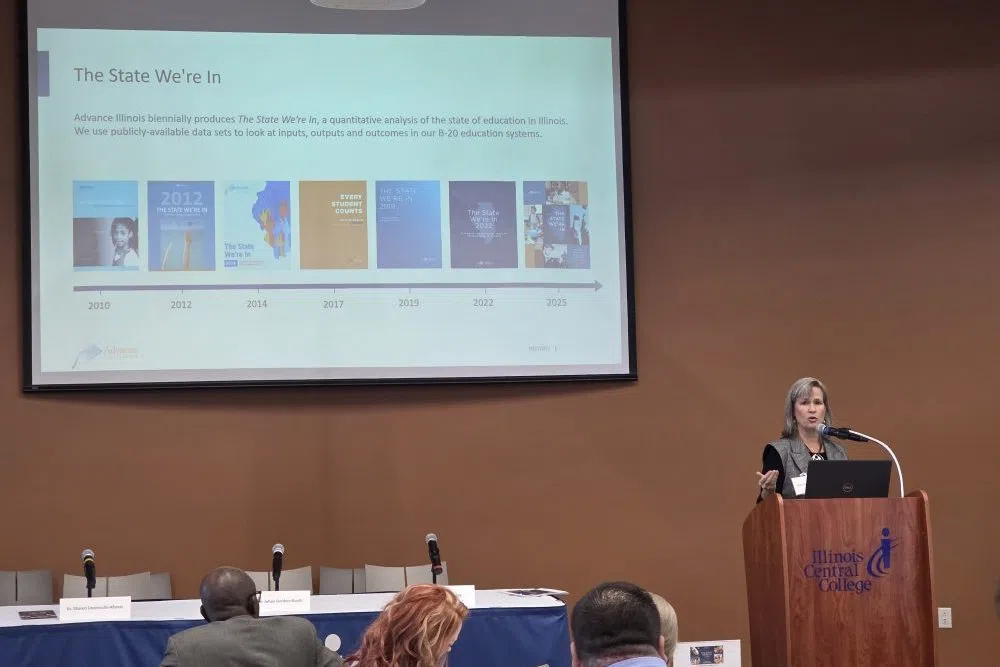PEORIA, Ill. – An Illinois non-profit bipartisan advocacy group focusing on education issues is touring the state to discuss its latest review.
Leaders with Advance Illinois made a stop at Illinois Central College’s Peoria campus on Wednesday to meet with community and education leaders to discuss its “The State We’re In” report. The report focuses on issues such as funding, proficiency, and learning gaps among different demographics.
Robin Steans is Advance Illinois’ president. She says one thing that stood out about the 2025 report is the lack of funding for a kids’ education at the beginning and towards the end of its schooling.
“We still got real work to do in terms of making sure all students and children have access to early childhood, and to college, those two things are not affordable enough,” Steans said.
Advance Illinois’ report indicates there is an estimated $8.9 billion funding gap across early childhood programs in the state. It adds that families at the poverty line spend 41% of their household income on child care for a toddler.
Steans says the other major concern in their findings is that mental health conditions are worsening among students of all ages in Illinois.
“It’s showing up in serious chronic absenteeism problems, it’s showing up in students who are dropping out because there are just too many issues, and they need more support than we’re able to currently provide,” Steans said.
The report says around 40% of K-12 students are reporting persistent sadness, with one in five considering suicide. In addition, 77% of youth report having at least one Adverse Childhood Experience, which is a traumatic experience that a child has gone through. Black youth are twice as likely to experience three ACE incidents.
The mental health issues continue into college, where 46% of college students report that mental health impacts their academics, more than double the rate from 2007.
Steans says investing more in counselors, teachers, and services can help address the problem. The report notes that only school psychologists are meeting benchmarks for staffing across the state, but that only 13% of students attend school districts with an adequate amount of counselors.
Steans noted some positives that Peoria Public Schools are doing to buck state trends.
“They do look at data, they do look to see where things are working, where are their challenges, and they really tackle them,” Steans said.
Steans says Peoria Public Schools is performing well in graduation rates, growing reading skills in middle school students, and reducing chronic absenteeism.




Comments